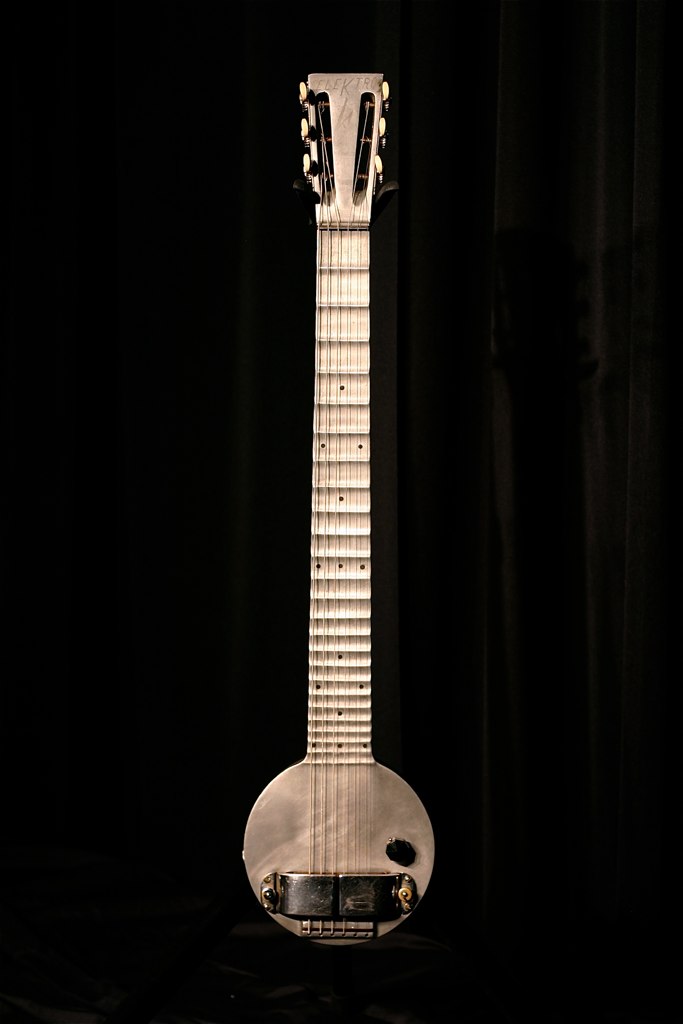- How Electric Guitars Redefined Music - November 13, 2023
- How to Identify a Reputable Mobile Casino in Five Simple Steps - October 18, 2022
- Gambling Can Provide Inspiration for Poker and Other Arts - September 14, 2022
Music has been integral to human culture since prehistoric times, possibly predating even language. Over centuries, as technology advanced, musical instruments evolved, leading to significant developments in the 20th century. One such groundbreaking innovation was the electric guitar, which revolutionized the music industry, particularly in the 1960s and 1970s.
Contrary to popular belief, Les Paul was not the inventor of the electric guitar. The real credit goes to George Beauchamp, a musician, and Adolph Rickenbacker, an electrical engineer. They created the first commercially viable, amplifiable electric guitar, surpassing previous attempts that lacked professional sound quality.
The acoustic guitar’s limitations in volume became evident in the 1880s concert halls and were further overshadowed by the Big Bands of the 1920s. Its inability to compete with louder instruments in bands necessitated an innovation that would elevate the guitar’s presence in ensemble settings.

George Beauchamp’s involvement in Hawaiian music, where the guitar was a primary melody instrument, played a pivotal role in the electric guitar’s invention. This genre’s influence led to the experimentation and eventual electrification of the guitar, particularly the Hawaiian-style lap steel guitar.
The transition from wooden Spanish-style hollow guitars to louder metal Hawaiian steel guitars coincided with advancements in electrical amplification. These guitars played horizontally across the knees, became louder and more resonant in their metal forms, paving the way for further innovations.
Beauchamp met Rickenbacker at the Dopyera Brothers’ guitar manufacturing facility. Their collaboration led to the creation of The Rickenbacker International Corporation, dedicated to producing electric musical instruments. Their experiments culminated in the development of an electromagnetic device that accurately captured string vibrations.
In 1931, Beauchamp and Rickenbacker’s efforts bore fruit with the creation of the “Frying Pan,” an aluminum lap steel guitar designed by Harry Watson. This model featured their innovative pickups, marking the birth of the first commercial electric guitar prototype.
The Core Reason for Invention
The invention of the electric guitar can be viewed as a response to the evolving musical landscape, specifically the rise of jazz and dance music in the 1920s in the United States. This genre’s popularity in public spaces demanded an instrument capable of greater volume, leading to the development of the electric guitar. Its unique ability to convert string vibrations into electrical signals, which are then amplified, allowed for louder, more versatile sounds.
The electric guitar was essentially invented to make the guitar audible in band and orchestral settings. As jazz and dance music grew in popularity, the acoustic guitar struggled to project its sound over brass and percussion instruments. This need for a louder, more prominent guitar sound in ensemble settings led to the invention of the electric guitar.
Technological Breakthroughs in Guitar Design
What makes the electric guitar special is its ability to produce and amplify sound without relying on the acoustic properties of the guitar’s body. Electric guitars use pickups to convert the vibrations of the strings into electrical signals, eliminating the need for large, resonant bodies or sound holes. This innovation not only increased the guitar’s volume but also expanded its tonal possibilities, leading to new genres and styles of music.
Versatility and Influence of the Electric Guitar
The electric guitar has played a pivotal role in various music genres, from traditional and folk to modern rock, metal, and pop. Its versatility as a rhythm and lead instrument has made it a staple in many musical forms, shaping the sound and evolution of contemporary music.
The term “electric” in the electric guitar refers to its mechanism of sound production. Unlike acoustic guitars, which rely on the resonance of the guitar’s body, electric guitars feature pickups that translate string vibrations into an electric signal. This signal is then sent to an amplifier, which converts it into sound. This unique mechanism allows electric guitars to produce a wide range of sounds and effects, contributing to their popularity and enduring influence in music.
The Role of Electric Guitar in the Decline of Acoustic
With the advent of the electric guitar, there’s an ongoing debate about its role in overshadowing acoustic music genres. Critics argue that the popularity of electric guitars has led to a diminished appreciation for acoustic instruments and genres, altering the landscape of traditional music.
The electric guitar has often been associated with male musicians, raising questions about gender dynamics in the music industry.
The production of electric guitars, involving metal, plastics, and rare woods, presents an environmental debate. Critics point to the ecological footprint of manufacturing processes and materials used, urging for more sustainable practices in the industry.
There’s a debate on the place of the electric guitar in music education. Traditionalists often favor classical instruments, while others advocate for including electric guitars to attract and engage more students in music learning.
With the rise of digital music technology, there’s a debate on how synthesizers and software-based instruments are impacting the relevance of electric guitars.
Bonus Facts
- Different types of wood used in electric guitar bodies, like mahogany, maple, and alder, each contribute to unique tonal qualities, affecting the guitar’s sound character.
- Some electric guitars use a sustain block under the bridge to enhance sustain and stability, a feature not often highlighted but crucial to the guitar’s sound.
- The position of pickups on the guitar body significantly affects the tone, with bridge pickups typically producing a sharper sound compared to the warmer tones from neck pickups.
- Some electric guitars come with a coil-splitting feature, allowing players to switch between humbucker and single-coil sounds, offering a wide range of tonal possibilities.
- Electric guitars have varying fretboard radii; a smaller radius is ideal for chord playing, while a larger radius facilitates lead playing and string bending.
- In addition to traditional woods, some modern electric guitars use synthetic materials or carbon fiber, offering durability and consistency in various climates.
- Electric guitars come in different scale lengths, affecting string tension and playability. Shorter scales offer easier playability, while longer scales provide better string tension and clarity.
- The type of tremolo system used can significantly affect a guitar’s tuning stability. Some systems, like the Floyd Rose, are designed for better tuning stability during extreme pitch changes.
- The customization of electric guitar electronics, like potentiometers and capacitors, can significantly alter tone, volume, and the overall sound character.
- Electric guitars are increasingly integrated with digital technology, like MIDI controllers and computer interfaces, allowing for more diverse soundscapes and recording capabilities.
Choosing the Right Electric Guitar
- When selecting an electric guitar, consider the music genre you prefer. Different guitars suit different styles – a heavy metal enthusiast might prefer a guitar with a high-gain humbucker, while a blues player might lean towards a guitar with single-coil pickups for a warmer tone.
- Regular maintenance of your guitar is crucial. This includes changing strings, cleaning the fretboard, and ensuring electronics are functioning properly. Regular maintenance will prolong the life of your guitar and maintain its sound quality.
- Your electric guitar’s potential is fully realized with the right amplifier and effects pedals. Experiment with various amps and pedals to find the combination that best suits your sound. Remember, the amp and pedals you choose can drastically change your guitar’s tone.
- The action of your guitar, which is the height of the strings above the fretboard, affects playability and comfort. If the action is too high, playing might be difficult; if too low, it may cause fret buzz. Consider getting a professional setup to ensure optimal playability.
- Familiarize yourself with the basic electronics of your guitar, such as how pickups work and the function of tone and volume knobs. Understanding these can help you better manipulate your guitar’s sound to suit your style.
And that wraps up our electric escapade! These instruments aren’t just tools for music; they’re portals to new sonic realms. From the jazz clubs of the ’20s to the rock stages of today, they’ve been the backbone of musical revolutions.







